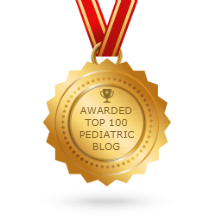© 2016 Roy Benaroch, MD
A flurry of recent reports has supported the health benefits of whole-fat milk. Increased dairy fat has been linked to lower rates of diabetes, and to improved cardiovascular health. The traditional advice – that low-fat or skim milk can help reduce weight, and help improve health – may have been based on faulty assumptions about the way ingested dairy fat affects metabolism. These new studies of dairy fit in with a shift away from the “fat is bad” story to a more nuanced “some fat is bad, but other fat is good, and it’s complicated” way of looking at things.
But it’s important to remember that none of the studies driving this change were done in kids. We don’t really know the long-term health impact of full- versus low- versus no-fat milk in infants or children, and there are still some good reasons to think that lower fat dairy might be a good choice for many families.
Until about ten years ago, the AAP recommended full-fat milk starting at age 1. That changed in 2008, when a position statement about cardiovascular health supported the use of reduced-fat dairy products starting at 12 months of age if there were any concerns about overweight or a family history of obesity or heart disease (that would include just about everyone.) This recommendation was based on research showing three things: (1) growth and neurologic function was the same in children raised on low-fat milk (ie, extra fat was not needed for brain and body development); (2) lipid profiles and weights were healthier in children raised on low-fat milk; and (3) children who consumed low-fat milk tended to have healthier diets, overall, than kids drinking whole milk.
That position statement “expired”, as all AAP statements do, 5 years after it was published. Currently, the AAP officially has no position on the relative merits of these varieties of milk. (They do have a position vaguely endorsing chocolate milk in schools, and another position strongly discouraging unpasteurized milk. All AAP policies can be searched here. There are a lot of them.)
The bottom line, now: there really isn’t any solid, new information from studies in children since that 2008 AAP position. Though I agree that the adult studies are compelling, adults and children are very different, especially when looking at metabolism, growth, and the long-term health consequences of dietary choices. For example, milk constitutes a much higher proportion of caloric intake in kids than in adults (children drink more milk, and they’re smaller. Usually.) They need proportionally more calcium and vitamin D and phosphorus for growing bones. And we know overweight children are very likely to continue to struggle to maintain a healthy weight as adults.
The best current evidence in children supports the use of reduced fat milk. If that changes, I’ll let you know.















Recent Comments